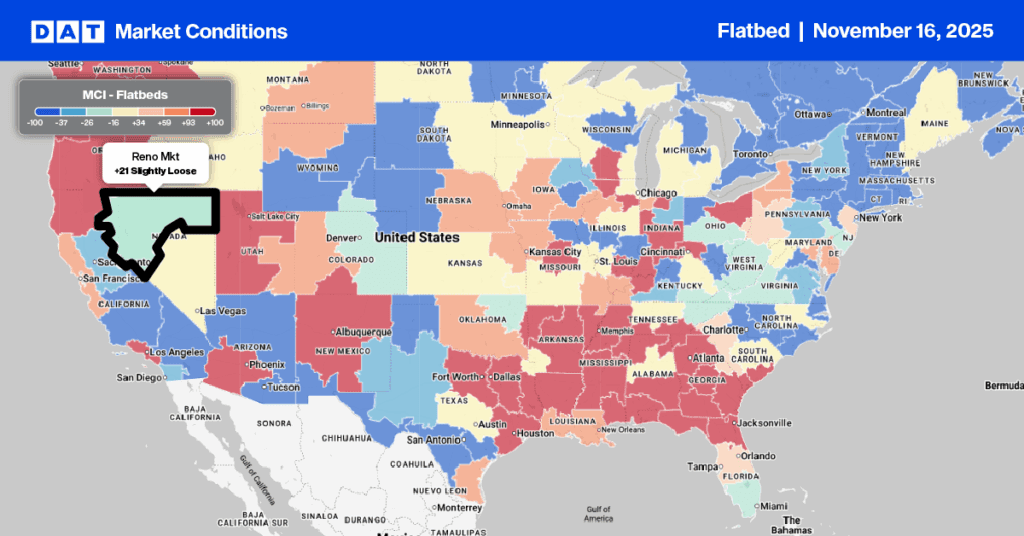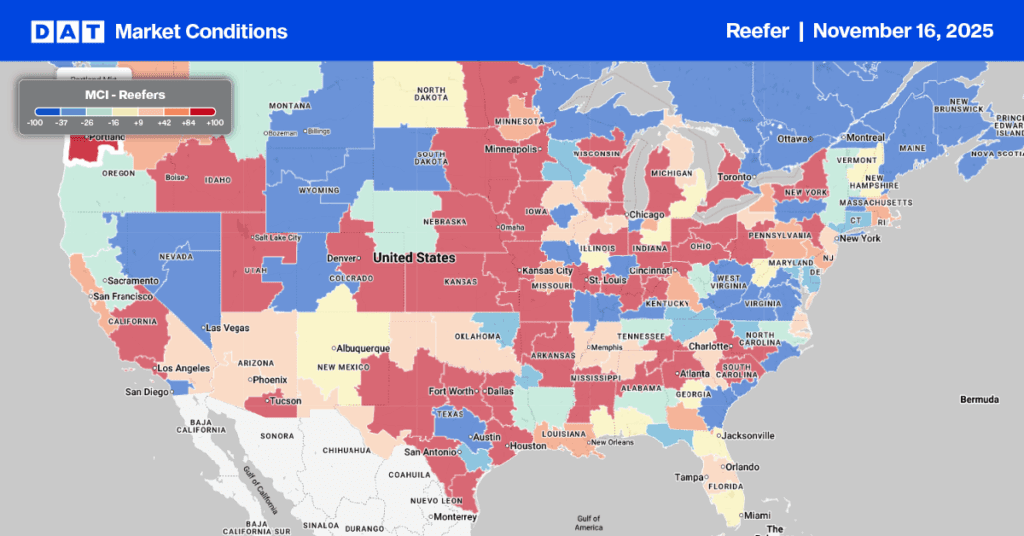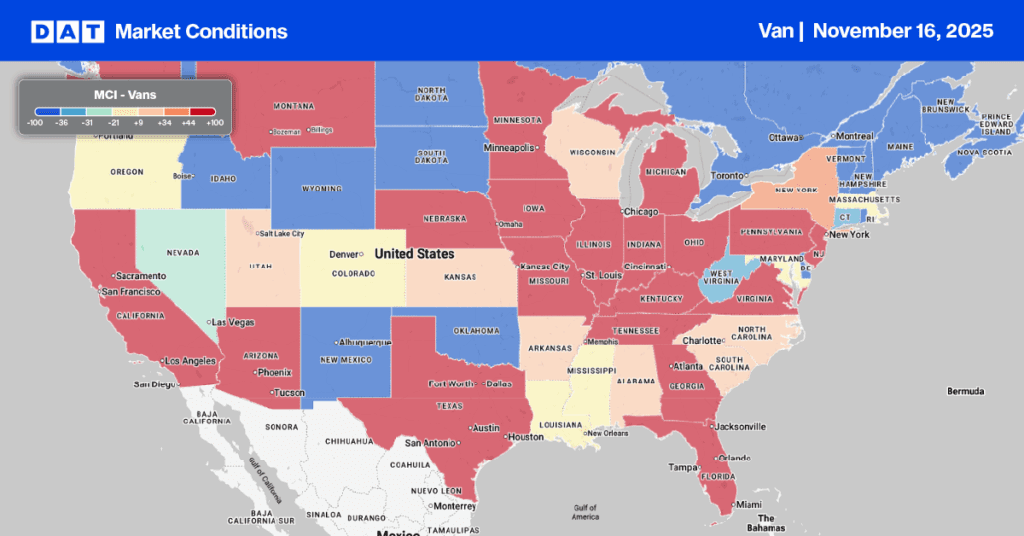Truckload capacity remains tight heading into peak shipping season. However, it’s beginning to feel like the traditional surge in truckload volume we normally see in the last quarter of the year has started already.
Get the clearest, most accurate view of the truckload marketplace with data from DAT iQ.
Tune into DAT iQ Live, live on YouTube or LinkedIn, 10am ET every Tuesday.
“Importers began pulling forward traditional peak season cargo in June as opposed to normal times [like] August and September,” says Gene Seroka, Port of Los Angeles Executive Director.
Unlike 2018 when importers pulled forward import volumes to avoid higher tariffs, we’re seeing different reasons for high freight volume.
“The normally slow dog days of summer just did not materialize this year,” says Dr. Chris Caplic, DAT Chief Scientist. “Instead, the combination of surprisingly strong consumer demand, new and evolving supply chain bottlenecks, and early proactive shipping for the holiday season kept the market at record highs. We do not see this slowing down for the rest of the year.”
In the latest DAT iQ Signal Report, Dr. Caplice noted retail sales increased 0.8% in August, recovering from July’s slight dip. Demand for both durable and non-durable goods remain high and overall retail sales are far exceeding the pre-pandemic rate of growth.
We don’t see a drop in demand any time soon, even with the surging Delta variant in many regions in the United States. Retailers are desperately trying to keep shelves stocked for the holiday season and are shipping by ground early — if possible — to shorten lead times.
On the supply side, new capacity challenges seem to appear everyday. The number of container ships waiting to unload at ports are making headlines worldwide and threatening the world economic recovery.
The shortage of equipment (really, the imbalance) is widespread across all modes and geographies. The complexities of bringing product from overseas through ports and onto their inland destinations are becoming obvious and are being discussed at the dinner table. Adding capacity at one stage in the supply chain just shifts the bottleneck to the next.
Demand for labor — at docks, in distribution centers, and especially in trucks — continues to plague the entire economy as well. Retailers, distributors, and carriers are all aggressively recruiting and offering bonuses to retain their workforce, with limited success.
Based on these factors, we expect that the truckload market will remain at this elevated level throughout 2021. However, we also anticipate a market correction of some sort occurring in Q1 to Q2 of next year. This ‘correction’ will most likely just be a return to normal inflationary growth rates, not a freight recession as we saw in 2019.


